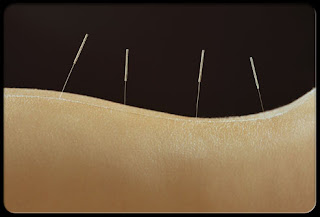The Truth About Back Pain
It might be a sharp stab. It might be a dull ache. Sooner or later, eight out of 10 of us will have back pain. Back pain is common -- and so are back pain myths. See if you can tell the myths from the facts.
Myth: Always sit up straight to prevent back pain.
Okay, slouching is bad for your back. But sitting up too straight too still for too long can be a strain on the back. If you sit a lot, try this a few times a day: Lean back in your chair with your feet on the floor and a slight curve in your back. Even better: Try standing for part of the day, while on the phone or while reading work materials.
Myth: Lifting heavy objects hurts your back.
It's not necessarily how much you lift, it's how you lift. Of course you shouldn't lift anything that might be too heavy for you. When you lift, squat close to the object with your back straight and head up. Stand, using your legs to lift the load. Do not twist or bend your body while lifting. It can really hurt your back to twist while bending and lifting with your feet on the floor -- as you might do when reaching down from a chair to lift a dropped pencil.
Myth: Stay in bed until back pain goes away.
Yes, resting can help an acute injury or strain that causes back pain. But it's a myth that you should stay in bed. A day or two in bed can make your back pain worse.
th: Back pain is always caused by an injury.
Fact: Overweight people suffer more back pain.
Staying fit helps prevent back pain. Back pain is most common among people who are out of shape, especially weekend warriors who engage in vigorous activity after sitting around all week. And as you might guess, obesity stresses the back.
Myth: Skinny people don't get back pain.
Anyone can get back pain. In fact, people who are too thin, such as those suffering from anorexia, an eating disorder, may suffer bone loss resulting in fractured or crushed vertebrae.
Myth: Exercise is bad for your back pain.
A big myth. Regular exercise prevents back pain. And for people suffering an acute injury resulting in lower back pain, doctors may recommend an exercise program that begins with gentle exercises and gradually increases in intensity. Once the acute pain subsides, an exercise regimen may help prevent future recurrence of back pain.
Fact: Chiropractic adjustments can help back pain.
The American College
Fact: Acupuncture can help back pain.
According to guidelines from the American College
Myth: A super-firm mattress is best for your back.
A Spanish study of people with longstanding, non-specific back pain showed that those who slept on a medium-firm mattress -- rated 5.6 on a 10-point hard-to-soft scale -- had less back pain and disability than those who slept on a firm mattress (2.3 on the scale) mattress. However, depending on their sleep habits and the cause of their back pain, different people may need different mattresses.
If you are suffering from back pain...don't self medicate...and don't continue to suffer! There is relief! Start with your Primary Care Physician...who can get you started on the road to a healthier and happier life...with no back pain!!!




No comments:
Post a Comment